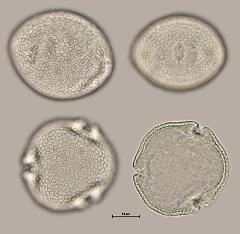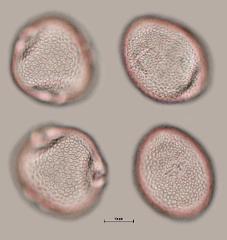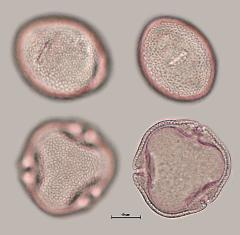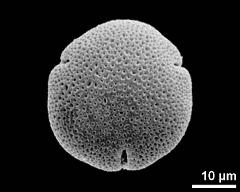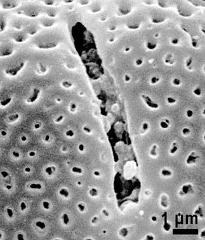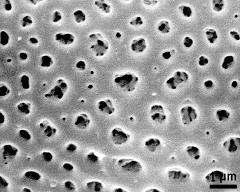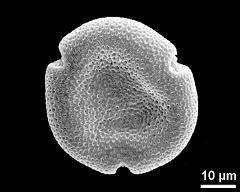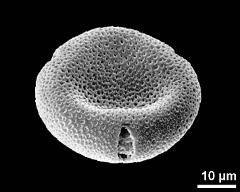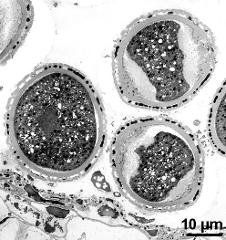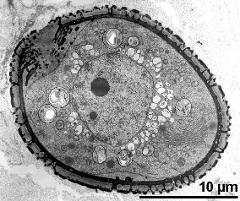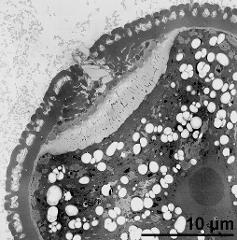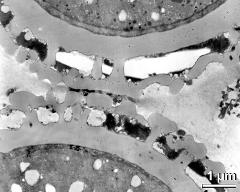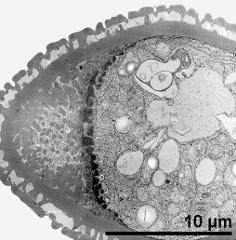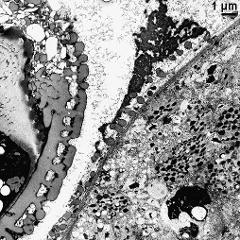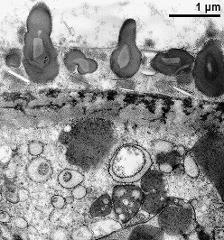Tilia platyphyllos
Taxonomy: Angiospermae, Malvales, Malvaceae, Tilia
Links: http://flora.nhm-wien.ac.at/Seiten-Arten/Tilia-platyphyllos.htm
Published: 2020-11-30
Pollen Description
Shape, Size and Aperture
pollen unit: monad, dispersal unit and peculiarities: monad, size (pollen unit): small (10-25 µm), size of hydrated pollen (LM): 36-40 µm, shortest polar axis in equatorial view (LM): 21-25 µm, longest polar axis in equatorial view (LM): 31-35 µm, shortest diameter in equatorial or polar view (LM): 31-35 µm, longest diameter in equatorial or polar view (LM): 31-35 µm, pollen class: colpate, polarity: isopolar, P/E-ratio: oblate, shape: -, outline in polar view: circular, dominant orientation (LM): oblique, P/E-ratio (dry pollen): -, shape (dry pollen): cup-shaped, outline in polar view (dry pollen): circular, infoldings (dry pollen): no suitable term, aperture number: 3, aperture type: colpus, aperture condition: colpate, tricolpate, aperture peculiarities: brevicolpus
Ornamentation and Structure
LM ornamentation LM: reticulate, nexine: -, sexine: -, SEM ornamentation SEM: microreticulate, homobrochate, suprasculpture SEM: -, TEM tectum: semitectate, infratectum: columellate, foot layer: continuous, endexine: absent, intine: monolayered, wall peculiarities: -, supratectal element: -
Miscellaneous
pollen coatings: pollenkitt, reserves in cytoplasm: starch, cell number: -, Ubisch bodies: present
Annotations: pollen in dry condition: polar area sunken; endexine restricted to apertures
Author(s) of diagnosis: Halbritter, Heidemarie; Hesse, Michael; Heigl, Helmut
Pictures
Picture legend
- hydrated pollen - fresh, glycerine, unstained, photographer: Heigl, H.
- hydrated pollen - fresh, glycerine, ruthenium red, photographer: Heigl, H.
- hydrated pollen - fresh, glycerine, ruthenium red, photographer: Heigl, H.
- polar view - fresh, rehydrated (water) & critical point dried & sputter coated with gold, photographer: Halbritter, H.
- detail of aperture - fresh, rehydrated (water) & critical point dried & sputter coated with gold, photographer: Halbritter, H.
- exine surface - fresh, critical point dried, photographer: Halbritter, H.
- polar view of dry pollen grain - dry, sputter coated with gold, photographer: Halbritter, H.
- dry pollen grain in equatorial view - dry, sputter coated with gold, photographer: Halbritter, H.
- pollen grains and part of tapetum wall (bottom) - fresh, glutaraldehyde & osmium, uranyl acetate & lead citrate, photographer: Hesse, M.
- hydrated pollen grain - fresh, glutaraldehyde & osmium, uranyl acetate & lead citrate, photographer: Hesse, M.
- aperture - fresh, glutaraldehyde & osmium & potassium ferrocyanide, uranyl acetate & lead citrate, photographer: Hesse, M.
- detail of pollen wall - fresh, glutaraldehyde & osmium, uranyl acetate & lead citrate, photographer: Hesse, M.
- aperture - fresh, glutaraldehyde & osmium & potassium ferrocyanide, uranyl acetate & lead citrate, photographer: Hesse, M.
- pollenwall (left) and tapetum wall with Ubisch bodies - fresh, glutaraldehyde & osmium & potassium ferrocyanide, uranyl acetate & lead citrate, photographer: Hesse, M.
- Ubisch bodies on locule wall - fresh, glutaraldehyde & osmium & potassium ferrocyanide, uranyl acetate & lead citrate, photographer: Hesse, M.
Literature
- (1976) The pollination biology of Tilia. Amer J Bot 63: 1203-1212
- (1961) The fine structure of the pollen wall of Tilia platyphyllos. New Phytol 3?: 393-399
- (1971) Scanning electron microscopy of Tilia pollen. New Phytol 70: 687-692
- (1993) Pollenkitt development and composition in Tilia platyphyllos (Tiliaceae) analysed by conventional and energy filtering TEM. Pl Syst Evol, Suppl 7: 39-52
Copyright and Citation
Cite this publication as:
Halbritter H., Hesse M., Heigl H. 2020. Tilia platyphyllos. In: PalDat - A palynological database. https://pc8.botanik.univie.ac.at/pub/Tilia_platyphyllos/304194;jsessionid=BF8854CADDD1CC7ECBED170755D4C961; accessed 2025-01-25

